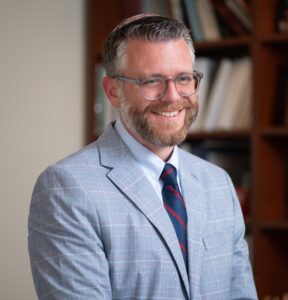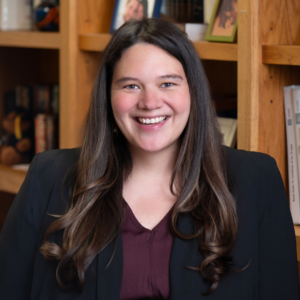
The World that Isn’t There
Dec 27, 2024 By Joel Seltzer | Commentary | Miketz
Years ago, I read a book by the author Chuck Klosterman titled But What if We’re Wrong? The premise of the book is to attempt to “think about the present as if it were the past,” or in other words, to consider whether despite our current devotion to rationality and the scientific method, there are aspects of our modern world about which we might be profoundly wrong?
Read More
What Makes Groups Reject Their Own?
Dec 20, 2024 By Rabbi Yael Shmilovitz | Public Event video | Video Lecture | Vayeshev
The best way to bring folks together is to give them a real good enemy. The Wizard of Oz in Wicked (2024) Joseph’s brothers resent him so much they can’t even stand the sight of him: וַיִּשְׂנְאוּ אֹתוֹ וְלֹא יָכְלוּ דַּבְּרוֹ לְשָׁלֹם (Gen 37:4)—they hated him so much they could not dabro leshalom. The commentators […]
Read More
When Jacob Met Esau: Facing Our Fears
Dec 13, 2024 By Gordon Tucker | Commentary | Vayishlah
The story told in Parashat Vayishlah of the meeting between Jacob and Esau is well known. But a closer consideration of the details of the tale speaks to very contemporary concerns. The overall backdrop to the scene is the pervasive feeling of fear. Esau, Jacob learns, is approaching, and there are 400 men with him. Is it a lavish welcoming party? (This is not unheard of in the Middle East—I myself experienced just such a welcoming party in Egypt when I was traveling there with some American Cabinet officials in 1980.) Or is it a prelude to belligerency? Are the loud sounds they are making just the sounds of 400 excited people from a demonstrative culture, or are those cries of war? Jacob assumed the worst. He didn’t bother asking the messengers who reported Esau’s approach whether the 400 men were armed or not. Jacob reflexively got ready for battle
Read More
Going Out to Meet God and History
Dec 6, 2024 By Arnold M. Eisen | Commentary | Vayetzei
In what ways do the Jewish people, the descendants of Jacob, still reside in his “house”? How can we, who bear the name by which Jacob will be called in next week’s Torah portion, become the Israel whom Jacob henceforth struggles to become? I’d like to suggest, using the indispensable categories for Jewish self-understanding contributed by Rabbi Joseph Soloveitchik, that Jacob is party to the “covenant of fate,” while Israel signifies the “covenant of destiny.” The “covenant of fate” is imposed on Jews by history and circumstance, while the “covenant of destiny” is one that Jews are called on to embrace in partnership with God.
Read More
“Ger Vetoshav”: A Lesson on Vulnerabilities and Humility
Nov 22, 2024 By Gordon Tucker | Commentary | Hayyei Sarah
Abraham rose, as he had to, from his wailing, because there was a necessary and sacred task to perform. And at that moment of needing to bury his dead, an enormity confronted him. Here’s how Abraham put it: “ger vetoshav anokhi”—I am merely a stranger (ger), come to be an alien resident (toshav) here. I have no place; I have no accumulated rights and privileges.
Read More
Can You Spell Check the Tanakh?
Nov 15, 2024 By David Zev Moster | Commentary | Vayera
There is a puzzling word in this week’s parashah: מֵחֲטוֹ “from sinning” (Genesis 20:6). God appears to Abimelekh in a dream and says, “I myself have kept you from sinning (מֵחֲטוֹ) against me [with Sarah].” The word מֵחֲטוֹ is unusual because it should be spelled with an alef, either as מֵחֲטֹא in 1 Samuel 12:23 or as מֵחֲטוֹא in Psalm 39:2. We know there should be an alef because the Hebrew root חטא “to sin” appears 603 times in the Tanakh and has an alef 99.2% of the time. So, is the missing alef of מֵחֲטוֹ a spelling error? It depends on who you ask.
Read More
How Can We Be a Blessing?
Nov 8, 2024 By Cantor Rabbi Shoshi Levin Goldberg | Commentary | Lekh Lekha
I have often pondered the meaning of the expression that a deceased person’s memory should be a blessing or will be for a blessing. Proverbs 10:7 teaches that “the name of a righteous person is invoked in blessing”—זֵ֣כֶר צַ֭דִּיק לִבְרָכָ֑ה . Originally, this likely referred to invoking the name of a well-known righteous person as an exemplar and conduit for our own blessing. The Babylonian Talmud also teaches (Kiddushin 31b) that after the death of a parent, we may continue to fulfill the mitzvah of honoring our parents, and by extension other beloved relatives and friends, by saying “zikhronam livrakhah,” “may their memory be for a blessing.”
Read More
Living With Difference
Nov 1, 2024 By Naomi Kalish | Commentary | Noah
Is the story of the Tower of Babel about human unity, or about human diversity? At the critical point when the Torah transitions from the story of Noah and its universal themes to the particular family of Abraham, the Tower of Babel conveys ambivalence about both unity and diversity. In doing so, it provides us with a model for how we can navigate our own complex social dynamics, especially in times of crisis and trauma.
Read More


